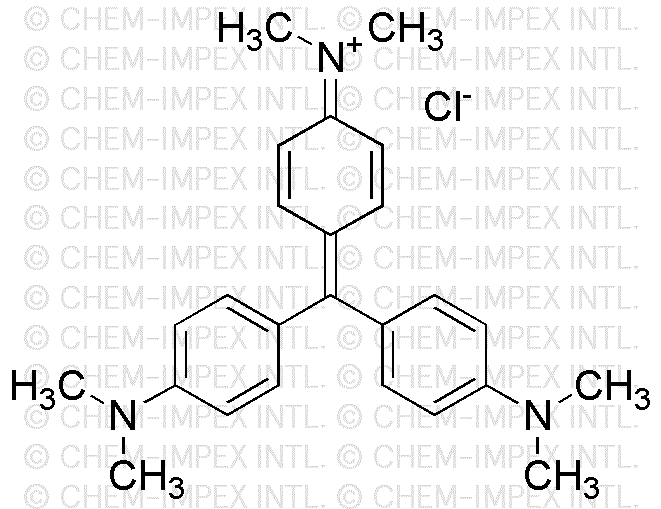Crystal Violet is widely utilized in research focused on:
- Microbiology: It serves as a vital stain in microbiological studies, helping researchers identify and differentiate bacterial species under a microscope.
- Histology: Commonly used in tissue staining, it enhances the visibility of cellular structures in histological samples, aiding pathologists in diagnosing diseases.
- Textile Industry: Employed as a dye, it provides vibrant colors to fabrics, making it popular in the production of textiles and clothing.
- Antimicrobial Applications: Its properties allow it to be used in antiseptic formulations, providing a means to prevent infections in clinical settings.
- Research and Development: Utilized in various chemical experiments and studies, it helps in the exploration of dye-sensitized solar cells and other innovative applications.
General Information
Properties
Safety and Regulations
Applications
Crystal Violet is widely utilized in research focused on:
- Microbiology: It serves as a vital stain in microbiological studies, helping researchers identify and differentiate bacterial species under a microscope.
- Histology: Commonly used in tissue staining, it enhances the visibility of cellular structures in histological samples, aiding pathologists in diagnosing diseases.
- Textile Industry: Employed as a dye, it provides vibrant colors to fabrics, making it popular in the production of textiles and clothing.
- Antimicrobial Applications: Its properties allow it to be used in antiseptic formulations, providing a means to prevent infections in clinical settings.
- Research and Development: Utilized in various chemical experiments and studies, it helps in the exploration of dye-sensitized solar cells and other innovative applications.
Documents
Safety Data Sheets (SDS)
The SDS provides comprehensive safety information on handling, storage, and disposal of the product.
Product Specification (PS)
The PS provides a comprehensive breakdown of the product’s properties, including chemical composition, physical state, purity, and storage requirements. It also details acceptable quality ranges and the product's intended applications.
Certificates of Analysis (COA)
Search for Certificates of Analysis (COA) by entering the products Lot Number. Lot and Batch Numbers can be found on a product’s label following the words ‘Lot’ or ‘Batch’.
Numéro de catalogue
Numéro de lot/série
Certificates Of Origin (COO)
This COO confirms the country where the product was manufactured, and also details the materials and components used in it and whether it is derived from natural, synthetic, or other specific sources. This certificate may be required for customs, trade, and regulatory compliance.
Numéro de catalogue
Numéro de lot/série
Safety Data Sheets (SDS)
The SDS provides comprehensive safety information on handling, storage, and disposal of the product.
DownloadProduct Specification (PS)
The PS provides a comprehensive breakdown of the product’s properties, including chemical composition, physical state, purity, and storage requirements. It also details acceptable quality ranges and the product's intended applications.
DownloadCertificates of Analysis (COA)
Search for Certificates of Analysis (COA) by entering the products Lot Number. Lot and Batch Numbers can be found on a product’s label following the words ‘Lot’ or ‘Batch’.
Numéro de catalogue
Numéro de lot/série
Certificates Of Origin (COO)
This COO confirms the country where the product was manufactured, and also details the materials and components used in it and whether it is derived from natural, synthetic, or other specific sources. This certificate may be required for customs, trade, and regulatory compliance.


